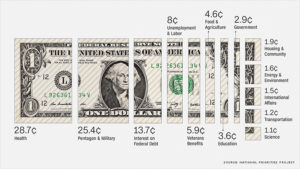The Minimum Wage Gap
 The gap between minimum wages and the cost of living is covered by government subsidies. These subsidies include food stamps, school meals, housing vouchers, Medicaid, the Earned Income Tax Credit (EITC) and more. Without these subsidies, our laborers and their children would face starvation, homelessness and poor health—and many children could experience abuse and neglect in unlicensed childcare settings while their parents are working.
The gap between minimum wages and the cost of living is covered by government subsidies. These subsidies include food stamps, school meals, housing vouchers, Medicaid, the Earned Income Tax Credit (EITC) and more. Without these subsidies, our laborers and their children would face starvation, homelessness and poor health—and many children could experience abuse and neglect in unlicensed childcare settings while their parents are working.
Minimum wages are paid to unskilled and some skilled laborers. Many states use the federal minimum wage of $7.25 per hour as their state minimum wage. This wage covers about 1/3 of basic costs for a family of 2 adults and 2 children. Basic costs include food, rent, medical care transportation, childcare and more. About 27 U.S. states have raised their minimum wage to about $11.00 per hour. This is a little more than half the cost of living in our wealthier states for a family of 2 adults and 2 children.
The Earned Income Tax Credit (EITC) is a refundable tax subsidy that adds cash to the low wages of laborers on whom we depend. EITC is paid according to a regulated formula. This refundable tax is paid at the end of the tax year, and laborers need a subsidy each month. Other wage subsidies, like food stamps, Medicaid and housing vouchers, fill the financial gap on a monthly basis.
Wage subsidies provide a safety net for laborers who earn low salaries. Low salaries are paid for many jobs such as those in seasonal resorts, irregularly scheduled food service work, health services, or some of our government jobs. Wage subsidies are not welfare, but they are an essential part of our economic policy.

